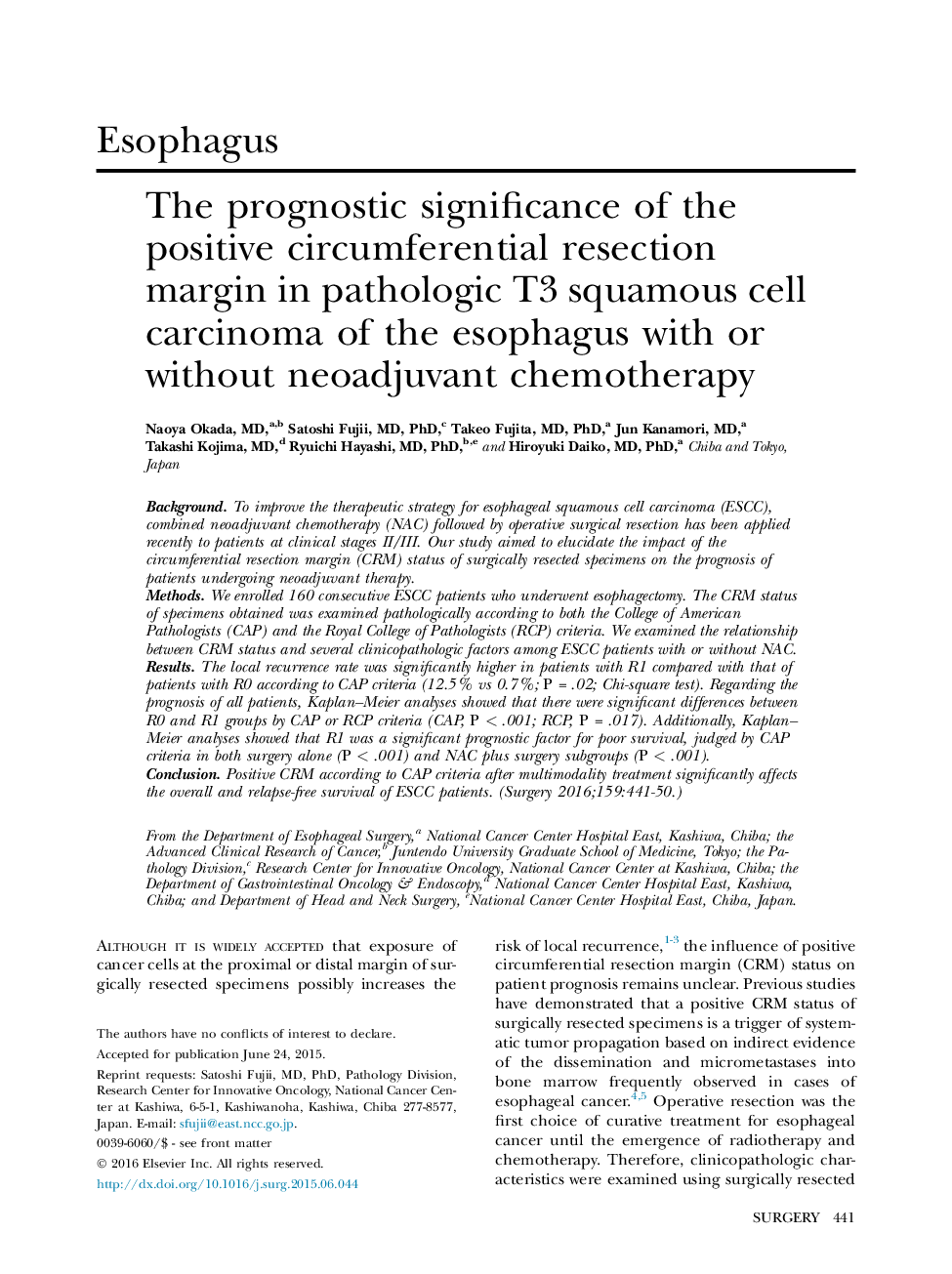| Article ID | Journal | Published Year | Pages | File Type |
|---|---|---|---|---|
| 4306453 | Surgery | 2016 | 10 Pages |
BackgroundTo improve the therapeutic strategy for esophageal squamous cell carcinoma (ESCC), combined neoadjuvant chemotherapy (NAC) followed by operative surgical resection has been applied recently to patients at clinical stages II/III. Our study aimed to elucidate the impact of the circumferential resection margin (CRM) status of surgically resected specimens on the prognosis of patients undergoing neoadjuvant therapy.MethodsWe enrolled 160 consecutive ESCC patients who underwent esophagectomy. The CRM status of specimens obtained was examined pathologically according to both the College of American Pathologists (CAP) and the Royal College of Pathologists (RCP) criteria. We examined the relationship between CRM status and several clinicopathologic factors among ESCC patients with or without NAC.ResultsThe local recurrence rate was significantly higher in patients with R1 compared with that of patients with R0 according to CAP criteria (12.5% vs 0.7%; P = .02; Chi-square test). Regarding the prognosis of all patients, Kaplan–Meier analyses showed that there were significant differences between R0 and R1 groups by CAP or RCP criteria (CAP, P < .001; RCP, P = .017). Additionally, Kaplan–Meier analyses showed that R1 was a significant prognostic factor for poor survival, judged by CAP criteria in both surgery alone (P < .001) and NAC plus surgery subgroups (P < .001).ConclusionPositive CRM according to CAP criteria after multimodality treatment significantly affects the overall and relapse-free survival of ESCC patients.
